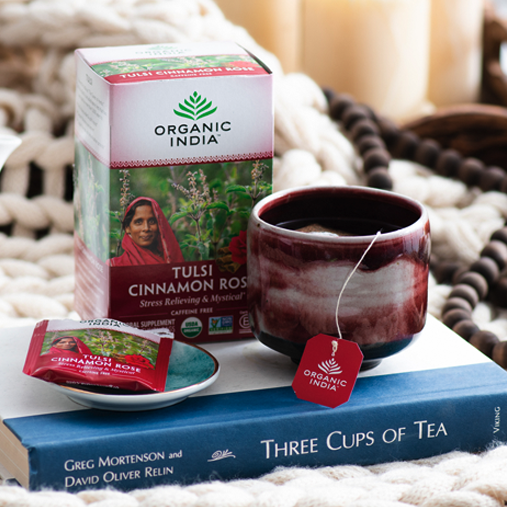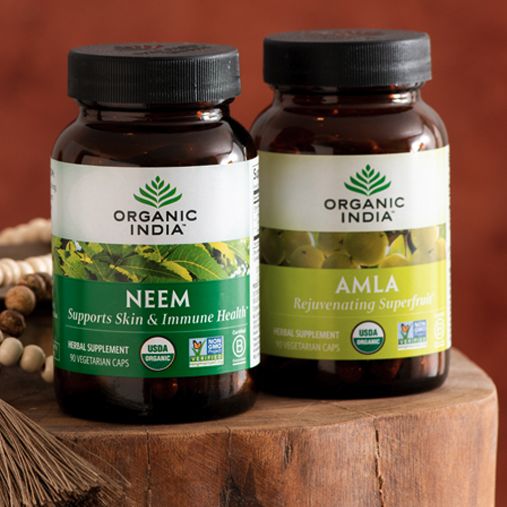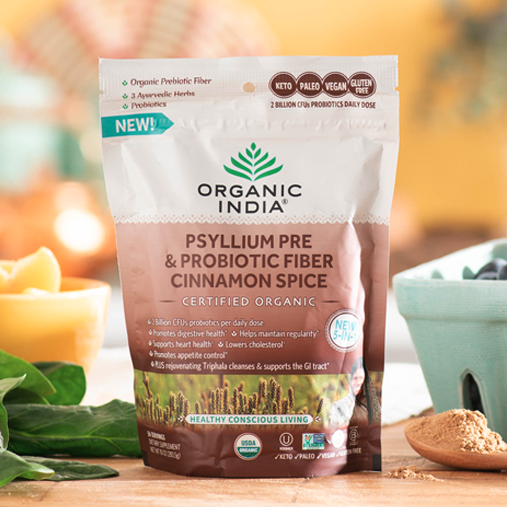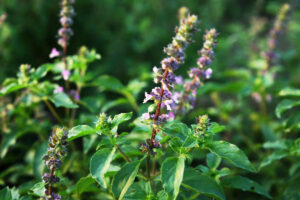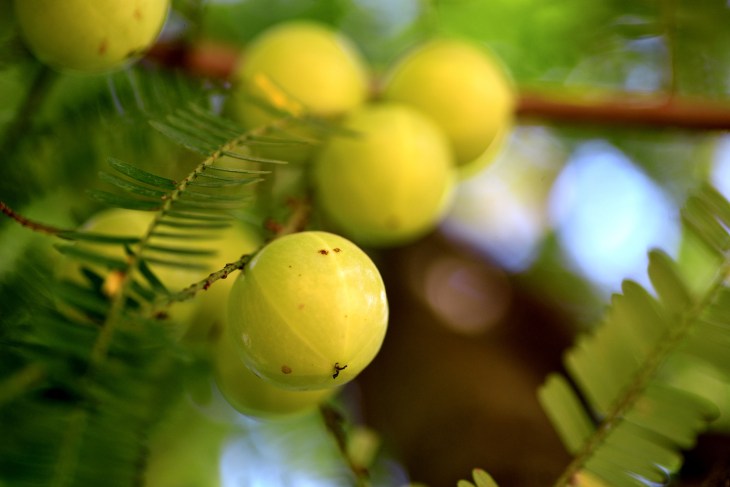Back
Thousands of years before the Nobel Award winning-scientist Linus Pauling produced evidence for the healing powers of vitamin C, Ayurvedic doctors were using Amla — often referred to as Indian Gooseberry — as a curative. Amla, aka Amalaki, is among the most antioxidant-rich foods produced in nature. The berry has been studied for myriad benefits and uses, including boosting immunity; defending against oxygen-robbing free radical cells; potentially slowing the aging process.
What is Amla?
Amla belongs to the Euphorbiaceae family and ripens in the autumn in the wet forests and hilly areas of the Indian subcontinent. The tree that bears this remarkable fruit is considered sacred in India, where it is eaten with salt and chili powder or made into pickles or sugared candy. While Amla is sour, it leaves an aftertaste of sweetness when eaten raw. Paradoxically, this sour fruit reduces stomach acidity and is frequently for gastric issues in Ayurveda.
Amla Benefits
Amla may help fight some systemic health conditions, and mitigate cellular damage. Herbal researcher Vidhi Bhatia wrote that the use of Amla “originates from the 5,000-year-old traditional Indian herbal system of Ayurveda — particularly “Rasayana” — a discipline focusing on the enhancing good health, supporting the immune system, and rejuvenating and revitalizing the body and mind.”
She continues, “In India, Amla is also popularly used in hair oils, with advertisements screaming of its ability to make hair healthy, thick, long and shiny. Not surprisingly, it is believed to have several medicinal properties. It was, and still is used extensively not only in India, but also in Iran, Iraq, Thailand, China, Italy, Germany (et cetera) as a laxative and diuretic — the list goes on.”
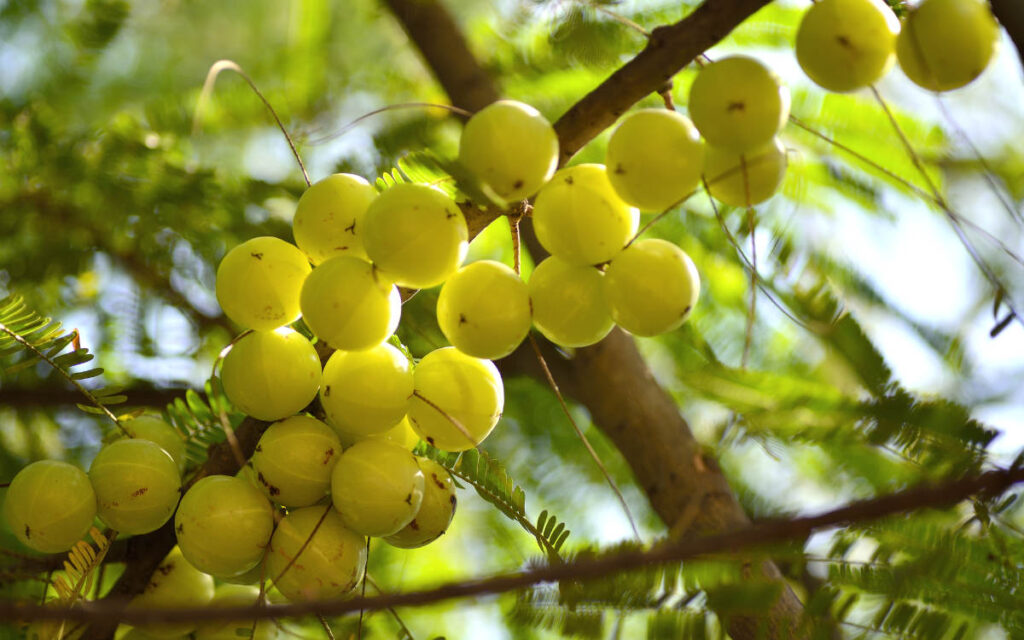
Nutrient Content of Raw Amla Berry
A hundred grams of raw Amla contains 478 mg of Vitamin C. By comparison, a lemon contains 77 mg of vitamin C per 100 grams.
As a food rich in Vitamin C, raw Amla supports the adrenal glands, used for cellular energy, and supports the health of skin and blood vessels. As a fibrous food, Amla has been used to relieve occasional constipation and other abdominal health issues. It may also be beneficial in supporting liver and heart health.
Amalaki in Traditional Indian Herbalism
Meenakshi Nagdeve, co-founder of Organic Facts online, wrote that because of its antioxidant properties, Amla is often used in Ayurvedic systems to support skin and hair health, as well as support overall immunity of the body.
As a vital ingredient of Triphala, Amla plays a role in this traditional herbal Indian formulation for supporting digestion and the immune system. Amla acts as a diuretic agent and is therefore thought to enhance food absorption, balance stomach acids, fortify the liver, and nourish the brain and mental functioning. It may also nourish respiratory function, skin quality, and hair health.
Herbs List, A Guide To Medicinal Herbs, reports that the fruit may also hep support a healthy inflammatory response, helpful for joint flexibility and mobility. This potent herb has also been traditionally used to aid immune and heart health, sugar metabolism, and relieve daily stress. Plus, the fruit is considered an exfoliating and astringent agent. Regular topical use is said to make the skin look younger and tighter. It is often used topically to make hair more lustrous and healthy-looking, as well as to prevent hair from turning grey.
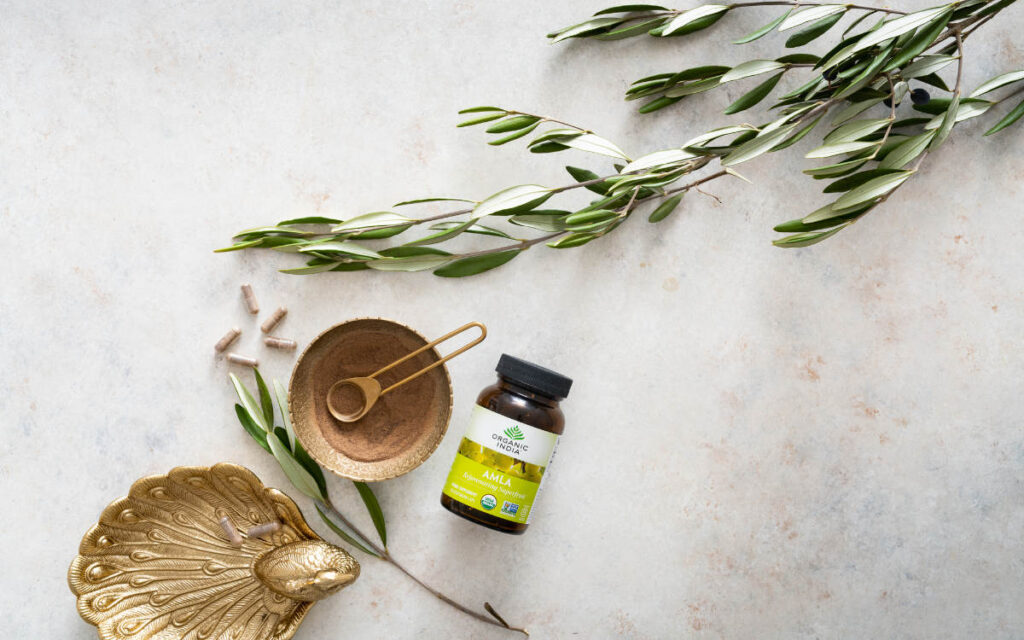
Better Than Just Vitamin C
A hundred grams of raw Amla contains 478 mg of vitamin C. By comparison, a lemon contains 77 mg of vitamin C per 100 grams. Amla offers 30 percent more vitamin C than oranges, as well.
All of Amla’s benefits accrue from consuming the berry in its whole, untreated form, which sets it apart from the ubiquitous vitamin C (ascorbic acid) pill that is created synthetically in a laboratory.
Holism in Ayurveda
A cornerstone of Ayurvedic philosophy is holism, which recognizes that each plant, herb, and food in its natural form is preferred to parts of foods, such as vitamins or minerals. Unlike laboratory-manufactured vitamin pills, whole Amla contains the entire nutritional complex that includes synergistic vitamins, minerals, antioxidants, amino acids, alkaloids, tannins, flavonoids, and other nutrients that are not to be found in vitamin pills.
Vidhi Bhatia explained that, scientifically speaking, “Initially, the therapeutic properties of Amla were accounted for by the high Vitamin C content. Studies are now revealing that it is in fact a combination of all the active ingredients that confers [its benefits]…” Ongoing research continues to shed light onto the individual therapeutic benefits of other important active compounds of the fruit, as well.
Looking for ways to use Amla? Aside from the convenient pills, you can make a nutrient-dense Chyawanprash-Inspired Amla Jam or if you’re looking for its topical benefits, try this Skin-Loving DIY Amla Facial Mask.
Learn about Triphala, a powerful tri-herb digestive supplement that contains Amla, here.

